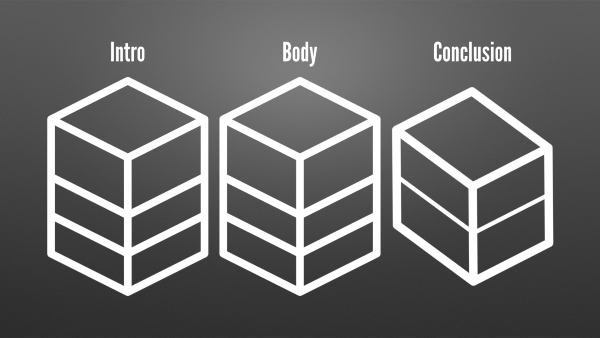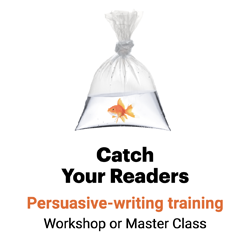Leave a lasting impression in the kicker
Think of the kicker as the fireworks display at the end of the Fourth of July picnic. It’s the reader’s reward for making it to the end of the piece.

The job of the kicker is to leave a lasting impression. Where the lead draws readers in with concrete, creative, provocative details, the kicker lets readers go using the same approaches.
But wait! Surely there’s a metaphor for that.
Think of your kicker, the experts say, as a:
- Gymnast sticking the landing. “The ending of your story may say to the reader, ‘I decided to stop writing here,'” writes Roy Peter Clark, Poynter Institute senior scholar. “But if you have the readers’ needs in mind, you want your ending to be more than that. If your story is short, you want your ending to ‘stick the landing,’ the way a great gymnast completes a vault.”
- Chinese gong. “The most satisfying story endings reverberate like a Chinese gong,” writes Chip Scanlan, an affiliate faculty member at The Poynter Institute. “They conjure up images from throughout the story, then take you back to the beginning.”
- Big finish. “It’s the big finish,” writes Al Tompkins, The Poynter Institute’s senior faculty for broadcasting and online. “The close to the big sale. It is the grand finale of the fireworks display.”
- Nice pair of shoes. “Think about a handsome man wearing a tuxedo,” Clark writes. “You see him across the room and think that he’s the next George Clooney. Great hair, sharp jacket, stylish tie. Then you look down and see that he’s got a hole in his trousers and is wearing muddy brown shoes. That’s the way a lot of our stories look. We are a top-heavy, front-loaded crowd. Which is why we have to … PLAN something for the end.”
Write a creative ending.
So, as you plan your kicker, realize that the same approaches that work for the lead can also work well at the ending. So make your kicker:

1. Concrete. Choose a telling detail for the end of the piece. It should reveal new meaning about the topic, even as you close.
“Feature articles … rely not only on hooks but on kickers — something in the last paragraph that makes the readers feel they have had the tour, experienced a new shock of understanding,” writes Crawford Kilian, Canadian novelist, professor and the former public education columnist for the Vancouver Province newspaper.
“Like the end of an O. Henry story, a kicker may even force us to re-evaluate everything we’ve read in the piece.
Let’s pause and ponder that for a minute too.
“The technical term for such a flash of understanding is ‘anagnorisis,’ whose literal meaning in Greek is something like ‘up-knowing.’ In effect, we get a revelation of Truth Itself, hitherto concealed; we have moved to a higher level of understanding than we had before.”
2. Creative. Steal techniques like these from fiction writers:
- Anecdotes
- Metaphors
- Wordplay
- Human interest
- Juicy details
A quotation can also make an excellent ending although it doesn’t work so well as a lead. In fact, a quotation is probably the most common kicker approach for a feature-style kicker.
3. Provocative. Provoke a question in the reader’s mind so she keeps thinking about your story long after she’s finished the last paragraph.

Hit them with your best shot.
First impressions are important. But last impressions matter, too. If you use your most intriguing material for your lead, put your second-best in the kicker.
But some communicators — especially, interestingly, speakers and speechwriters — feel that leaving a lasting impression is so important, they put their second-best stuff at the top and save the best for last.
Here’s a helpful exercise, recommended by Roy Peter Clark, Poynter Institute senior scholar: After you write your story, try switching the lead and the kicker. Does it work?

Leave a Reply